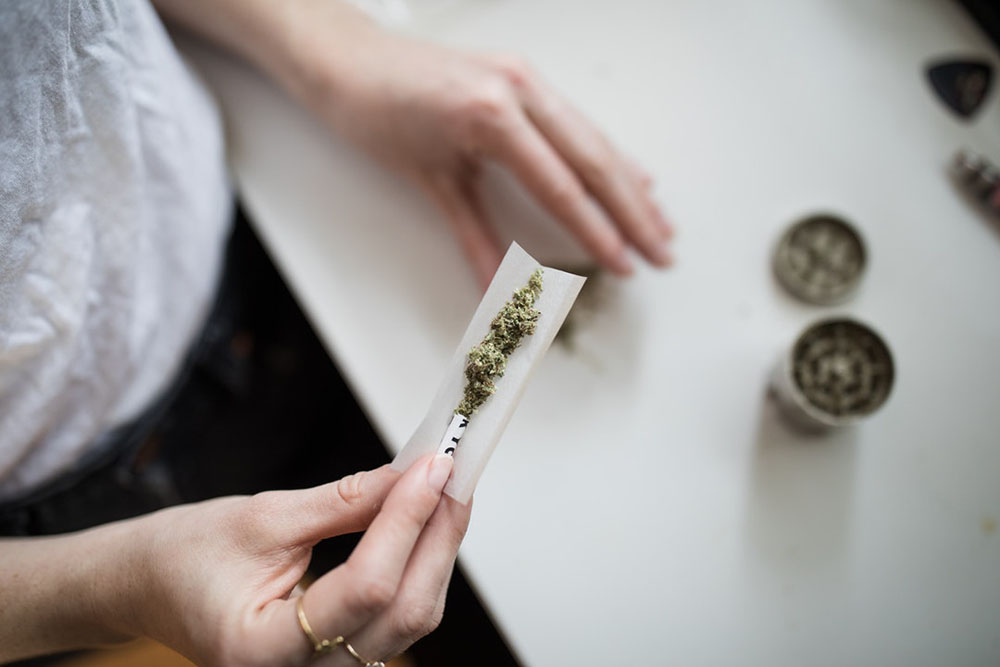Have you ever wondered if the weed you just bought could be laced with fentanyl? You’ve probably heard horror stories of people overdosing after smoking weed that was laced with the deadly opioid. Fentanyl is an extremely potent painkiller that is 50-100 times more powerful than morphine. When it’s added to marijuana, it can have devastating and even lethal consequences.
If you’ve ever used marijuana, you know the typical effects – euphoria, relaxation, increased appetite, and sometimes drowsiness or paranoia. But fentanyl produces a very different high that is extremely dangerous. It’s important to understand the signs that your weed may have been laced so you know what to look out for. The side effects and overdose risks are real, even for occasional or long-time marijuana users.
What Is Fentanyl and How Is It Added to Marijuana?
Fentanyl is an extremely potent synthetic opioid, many times stronger than heroin. It is typically used to treat severe pain, especially in patients who are already tolerant to other opioids. However, fentanyl is also produced illicitly and sold on the black market. Fentanyl is commonly mixed with other drugs like heroin and cocaine, but there is now evidence to suggest that it is being added to marijuana as well.
When fentanyl is added to marijuana, users may not be aware of its presence. The drug does not alter the appearance, smell, or taste of marijuana, making it difficult to detect without proper testing. This hidden danger puts individuals who use marijuana at risk, as they may unknowingly consume fentanyl and put themselves in danger of overdose. Laced weed can also lead to addiction. At Crestview Recovery we offer fentanyl rehab in Portland.
To address this alarming trend, it is crucial to spread awareness about the dangers of fentanyl-laced weed. Education campaigns should be implemented to inform individuals about the risks associated with this combination and how to identify signs of fentanyl contamination. It is also important for law enforcement agencies to continue their efforts to crack down on the illegal production and distribution of fentanyl.
For a marijuana user, it is essential to prioritize safety and take precautions to minimize the risk of encountering fentanyl-laced weed. This includes purchasing marijuana from legal and reputable sources, being cautious when consuming marijuana from unknown or untrusted sources, and utilizing drug testing kits to detect the presence of fentanyl.
What Does it Mean to be “Laced”?
To “lace” marijuana means adding another substance to it. The process is relatively simple. Dealers and suppliers may mix fentanyl powder or liquid into the marijuana plant material or spray it onto the surface of the buds. In some cases, fentanyl may be added to other substances that are then disguised as marijuana, making it difficult for users to detect the presence of the drug.
There are actually no reports showing exact numbers of how often marijuana is intentionally mixed with other substances, and many cases of fentanyl-laced weed come from shared personal stories. As more states legalize marijuana for medical or recreational purposes, they have established standards for how good it must be when sold legally. So, getting mixed marijuana is more likely when you buy it from illegal sources.
Is it Possible to Lace Marijuana with Fentanyl?
Yes, marijuana can be laced with fentanyl; however, determining such a combination can be challenging. But there are certain signs and symptoms that can indicate the presence of fentanyl in your cannabis that you can watch out for.
Signs and Symptoms
Unusual Intensity: If the effects of the marijuana are significantly stronger than usual or if you experience an intense and overwhelming high, it could be an indication that fentanyl has been added.
Unexpected Sedation: Fentanyl is a potent opioid that can cause extreme drowsiness and sedation. If you find yourself unusually tired or lethargic after consuming marijuana, it may be a sign of fentanyl contamination.
Unexplained Overdose Symptoms: Fentanyl overdose symptoms can include difficulty breathing, extreme dizziness, confusion, loss of consciousness, and even respiratory failure.
Unusual Packaging: Pay attention to the packaging of your marijuana. If it appears tampered with or if there are inconsistencies in the labeling or branding, it could be a sign that the product has been contaminated with fentanyl.
Strange Odor or Taste: While fentanyl itself does not have a distinct odor or taste, the process of lacing marijuana with the drug may leave behind a chemical or strange smell. Similarly, if you notice a bitter or unusual taste when smoking or consuming marijuana, it could be an indication of fentanyl contamination.
Abnormal Physical Reactions: Fentanyl-laced marijuana can cause additional physical reactions that are not typical of regular marijuana use. These may include extreme dizziness, nausea, vomiting, or a rapid and irregular heartbeat.
If you suspect that your marijuana may be laced with fentanyl and exhibit these symptoms after smoking weed, it is crucial to prioritize your safety and take appropriate action. Call 911 right away, and overdose reversal drugs like naloxone can save a life by restoring normal breathing.
Side Effects of Using Fentanyl-Laced Weed
Using fentanyl-laced weed can be extremely dangerous and even life-threatening. When mixed with marijuana, the effects can be unpredictable and frightening.
Physical Effects
Smoking fentanyl-laced weed may produce feelings of intense euphoria and drowsiness. However, it can also cause confusion, nausea, vomiting, and slowed breathing. Your body may feel very heavy, and you can experience slurred speech or a loss of coordination. These physical effects are signs that a dangerous amount of fentanyl has entered your system.
Increased Heart Rate and Blood Pressure
Fentanyl-laced weed can cause a rapid and irregular heartbeat, as well as elevated blood pressure. These cardiovascular effects can be dangerous, particularly for individuals with pre-existing heart conditions.
Overdose Risk
The risk of overdose from fentanyl-laced weed is high because the potency can vary in each batch. Even a small amount of fentanyl can slow your breathing and lead to unconsciousness or death. Someone who has overdosed may have a limp body, a pale complexion, blue lips or fingernails, and pinpoint pupils. This is a medical emergency—call 911 right away.
Long-Term Damage
Using fentanyl-laced weed, even once, can have lasting effects on your health. Fentanyl acts on the opioid receptors in your brain that control pain and emotions. Repeated use changes how these receptors work and can lead to addiction, mental health issues like depression, and trouble feeling pleasure from normal activities.
The only way to avoid these harmful side effects is to not use any weed that you suspect could be laced. It’s simply not worth the risk. If you’ve already used fentanyl-laced weed, talk to medical professionals about ways to get healthy again and avoid relapse. At Crestview Recovery, we provide substance use treatment as well as mental health treatment in Oregon to help you heal from side-effects of fentanyl-laced weed. They can help you access treatment for any substance use disorder and recommend lifestyle changes and social support. Your life is valuable–please reach out for help rather than attempting to deal with this alone.
Can You Overdose From Smoking Weed Laced With Fentanyl?
Unfortunately, yes. Fentanyl is lethal even in very small doses, as little as 2 mg can be fatal for some people. Smoking weed laced with fentanyl is extremely dangerous and life-threatening. The effects of fentanyl are intensified when combined with marijuana, increasing the risks of overdose, respiratory depression, and death.
Some signs of fentanyl exposure include:
- Confusion or delirium
- Excessive sleepiness
- Cold, clammy skin
- Nausea and vomiting
- Constipation
- Pinpoint pupils
- Dangerously slowed heart rate
The dangers of fentanyl are severe, and users of any substance should exercise extreme caution. While smoking marijuana is relatively uncommon, the stakes are too high to ignore the risks. Your life could depend on it, so if there’s any doubt about what’s in your marijuana, it’s best to avoid using it altogether. Other risk-reducing strategies include:
- Buy from a trusted source. Know your dealer and their supply chain.
- Inspect the marijuana before using it. Look for unusual powders, liquids, or crystals, which could indicate lacing.
- Start with a very small amount, especially when trying a new batch. This allows you to gauge the effects before consuming more.
- Never use it alone. Have someone with you who can call for help in an emergency.
If you suspect fentanyl contamination in your marijuana or if you or someone you know is struggling with substance use, seek help immediately. There are resources available to provide support and guidance in overcoming addiction and ensuring your overall well-being.
Fentanyl and Marijuana Treatment at Crestview Recovery

At Crestview Recovery, we offer comprehensive and specialized addiction treatment programs tailored to individuals struggling with fentanyl and marijuana abuse. Our dedicated team of professionals is committed to providing personalized care, addressing the unique challenges that arise from the use of these substances. Through a combination of evidence-based therapies, counseling, medical supervision, and holistic approaches, we aim to guide our clients towards lasting recovery.
Whether the struggle involves fentanyl, marijuana, or a combination of both, our integrated treatment approach focuses on addressing underlying issues, developing coping strategies, and fostering a supportive environment. At Crestview Recovery, we are dedicated to helping individuals regain control of their lives and embark on a path to a healthier and more fulfilling future. Contact us today!

Since 2016, Dr. Merle Williamson, a graduate of Oregon Health Sciences University, has been the Medical Director at Crestview Recovery, bringing a rich background in addiction medicine from his time at Hazelden Treatment Center. He oversees outpatient drug and alcohol treatments, providing medical care, setting policies, detox protocols, and quality assurance measures. Before specializing in addiction medicine, he spent 25 years in anesthesiology, serving as Chair of Hospital Pharmacy and Therapeutics Committee and Chief of Anesthesia at Kaiser Permanente. This experience gives him a unique perspective on treating prescription drug addiction.


